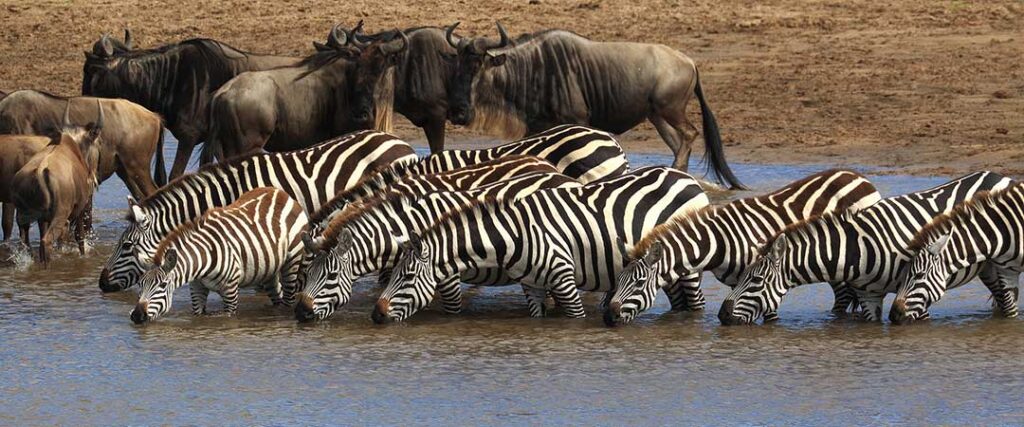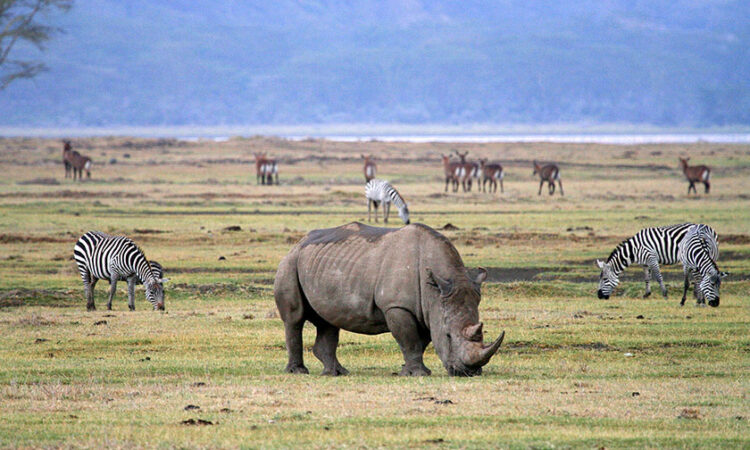Ngorongoro Conservation Area, Tanzania
The Ngorongoro Conservation Area is a designated UNESCO World Heritage Site located in the crater highlands of Tanzania. Ngorongoro is situated 180 kilometers west of Arusha. Ngorongoro is named for the Ngorongoro Crater located in the region. Ngorongoro, founded in 1959, encompasses an area of 8,292 square kilometers. Ngorongoro is integrated into the Serengeti ecosystem and borders Serengeti National Park to the northwest, with the Serengeti plains being to the south. The eastern limits of the Ngorongoro are delineated by the rim of the East African Rift Valley escarpment.
Ngorongoro Conservation Area: Ngorongoro is one of the largest protected areas in Tanzania, drawing a significant number of tourists each year. The diverse wildlife, magnificent landscapes, avian species, and numerous calderas all entice people to see this naturally endowed location. The Ngorongoro Crater is the primary attraction for travelers visiting the Ngorongoro Conservation Area.

Points of Interest in Ngorongoro Conservation Area
The Ngorongoro Conservation Area boasts numerous attractions that draw substantial annual tourist visitation. The following are the attractions in Ngorongoro:
Ngorongoro Caldera
Ngorongoro Crater is the largest inactive, undamaged, and unfilled volcanic crater globally, measuring 610 meters in depth and encompassing over 265 square kilometers, renowned for its high density of species. The Ngorongoro Crater offers travelers spectacular vistas. The Ngorongoro Crater contains soda lakes, such as Lake Magadi, which attract a diverse array of avian species, including flamingos and other aquatic birds. Picnics can be conducted here, providing a view to admire.
Craters
In addition to the Ngorongoro Crater, there are additional craters within Ngorongoro that travelers also visit. The Olmoti and Empakai calderas are additional volcanic craters that draw tourists to Ngorongoro, with the former renowned for its magnificent waterfalls and the latter celebrated for its deep lake surrounded by verdant cliffs.
Olduvai Gorge
The Olduvai Gorge is a significant archeological site in East Africa, notable for the discovery of the first Zinjathropus skull. This historical section of the Olduvai Gorge attracts numerous travelers to Ngorongoro to view the ancient cranium and study human evolution.
Transitory sand
Shifting sand is an enigmatic phenomenon in which sand dunes relocate from one location to another while preserving their form. This shifting sand is historically thought to originate from the active volcanic peak of Oldonyo Lengai, where the sand dunes migrate approximately 10 meters to a different location over the course of a year.
Wildlife
The wildlife in Ngorongoro is highly diverse, featuring a significant variety of animals such as wildebeests, zebras, wild dogs, cheetahs, reedbucks, gazelles, spotted hyenas, hippos, elands, and blue monkeys, among numerous more. The majority of tourists frequent the Ngorongoro Conservation Area for wildlife observation.
Five major factors
The Big Five can be observed in Ngorongoro, one of the rare national parks in Tanzania where tourists can view all of them simultaneously. The Big Five include lions, elephants, leopards, buffaloes, and rhinoceroses. The black rhinos in the Ngorongoro Conservation Area are distinctive, attracting several people during game drives. The Ngorongoro Crater possesses the highest density of lions. The Ndutu Lake region in the western part of the conservation area hosts significant populations of cheetahs, lions, hartebeests, and jackals. Several cats are commonly observed around Ngorongoro.

Birding in Ngorongoro
Ngorongoro hosts a diverse array of avian species observable during birdwatching excursions. Bird species include yellow wagtails, saddle-billed storks, ostriches, Kori bustards, and lesser flamingos, among others
Engagements in Ngorongoro Conservation Area
Tourists on a Tanzania safari can engage in several activities in Ngorongoro. Activities encompass wildlife drives, walking safaris, birdwatching, trips to the Oldupai Museum, cultural excursions, and picnicking.
Best time to visit Ngorongoro Conservation Area
The Ngorongoro Conservation Area is accessible year-round, throughout both the wet and dry seasons. The dry season, spanning from May to October, is optimal for observing wildlife congregating around water sources. During the wet season from November to April, tourists may still visit the Ngorongoro Conservation Area to partake in game viewing, as the verdant grass provides ample grazing for herbivores, while predators conceal themselves to ambush their prey.
Methods for accessing the Ngorongoro Conservation Area
Ngorongoro is accessible via both terrestrial and aerial routes. Tourists travel around 160 miles by road, taking about 2 hours to reach Ngorongoro from Arusha. A four-wheel-drive vehicle is recommended. Tourists can reach Ngorongoro by air by traveling from Kilimanjaro International Airport to one of the airstrips in the Ngorongoro region.
Ngorongoro offers a variety of accommodation alternatives for tourists, including luxury, midrange, and economy accommodations. All campsites in Ngorongoro, with the exception of Simba, are designated as special, necessitating that travelers provide all basic amenities, as they are intended for self-sufficient safari enthusiasts. Opulent accommodations such as Ngorongoro Crater Lodge and Ngorongoro Forest Tented Lodge are ideal for those seeking unparalleled comfort and exceptional service.
Organizing a Tanzania safari and want recommendations for essential experiences to include? The Ngorongoro Conservation Area is precisely what you require. Request your selected tour operator to incorporate it into your Tanzania safari journey to ensure the cultivation of exceptional memorable moments.
